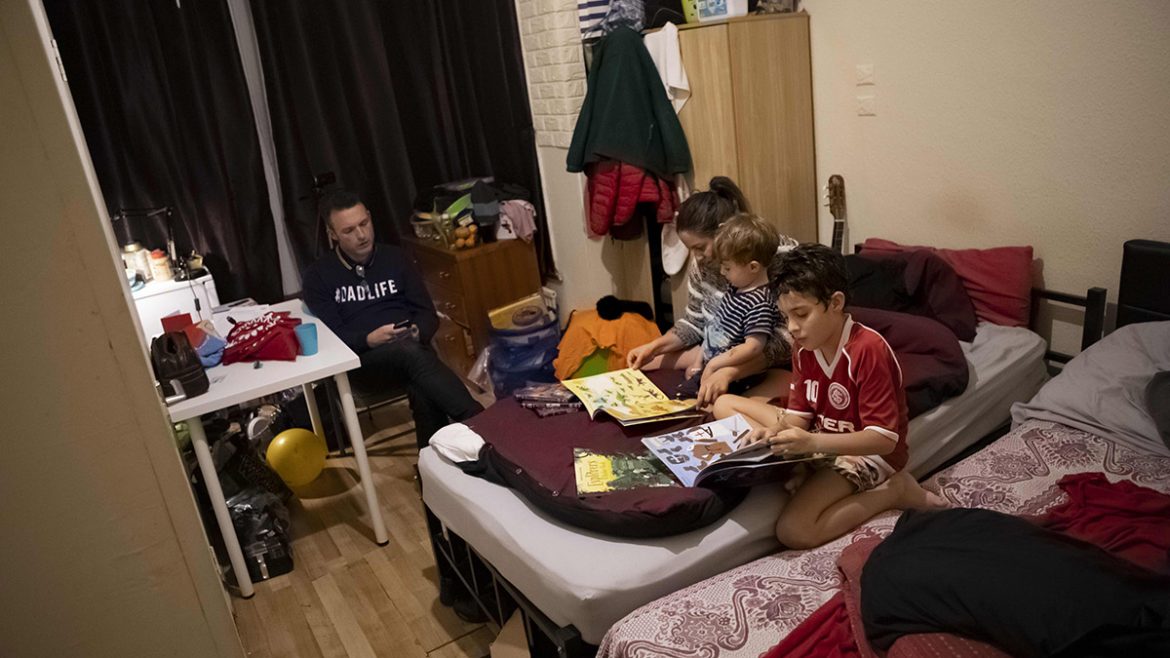The number of people living in temporary accommodation in Kingston upon Thames rose by 36 per cent between 2017 and 2021, according to the Royal Borough of Kingston.
A Freedom of Information request put in by the Kingston Courier showed an upward trend in the use of temporary housing accommodation provided by Kingston Council. As of March 31 2017, the number of temporary accommodation was 677, a number which had increased to 920 by March 31 2021.
The Housing (Homeless Persons) Act 1977 placed a duty on local housing authorities to secure permanent accommodation for unintentionally homeless people in priority need.
“It is really surprising and shocking that a single London borough can have a substantial amount of temporary living accommodations. While people consider our borough as affluent and leafy, it is also expensive and lacks affordable and social housing,” chief executive officer of KCAH Aileen Almond said during a busy morning at the headquarters of Kingston Churches Action on Homelessness (KCAH).
KCAH is a homelessness charity in St Peter’s Church Hall in Kingston that supports support single people facing housing crisis. The charity provides, in a bid to reduce rough sleeping, temporary accommodation or makes referrals to relevant housing providers and hostels for those in need.

Under the government scheme ‘Everybody In’ introduced in March 2020, KCAH helped to place 120 people into accommodation, who would otherwise be homeless and helped facilitate the moving-on of 24 people into more appropriate accommodation.
Since 2009, KCAH has also been involved in running temporary winter night shelters. It opened The Haven in 2018, a 30-bed winter night shelter hosted by several churches in Kingston, thanks to government funding to tackle rough-sleeping in the borough.
Night shelter coordinator for KCAH Sophie Mayor said: “We have KCAH staff, those who were shift leaders at the night shelter, are now working at hotels in Kingston to be that sort of friendly face someone that people remember and they can go to if they’ve got any problems.
“The ongoing support from KCAH is really, really important – a lot of these people who’ve been staying in the hotel have probably not had accommodation for a very long time.”
The relation between homelessness and temporary accommodation
Temporary accommodation is the name given to the accommodation that is offered to people who seek help from their council because they are homeless, according to national charity Shelter.
A report published by Shelter in June 2021 estimated that a total 2,643 people were living in temporary accommodation in Kingston as of June 30, 2021.
Kingston upon Thames was ranked twentieth in a list of the highest local rates of homeless people across England in Shelter’s Report, with an estimated total of 2,657 homeless people – or one in every 67 people – in temporary accommodation or sleeping on the streets.
Below are the top 30 highest local rates of people who are homeless (living in temporary accommodation or sleeping on the streets) in England only.
Upward trend in use of temporary accommodation in the past four years
The increase of use of temporary accommodation in Kingston in the past four years, rising from 677 as of March 31 2017 to 920 by March 31 2021, is an upward trend that was demonstrated across the country.
There were 96,060 households in temporary accommodation in the UK at the end of September 2021, which was a 1.5 per cent increase on the number a year previously. A total of 121,680 dependent children were housed in temporary accommodation.
In Greater London, 11,018 people seen rough sleeping in 2020/21 is almost twice the number seen in 2011/12 (a 94 per cent increase). The majority of rough sleepers (84 per cent) are male, while four-fifths (80 per cent) are aged between 26 and 55, according to Shelter's report.
The main driver of homelessness is the cost and affordability of housing. Homelessness isn’t just visible rough sleeping, though.
"Many people sleep in well-hidden or isolated locations, such as private gardens in bushes, or ride night buses. Others will sofa-surf or put themselves in unsafe situations, such as exchanging sex for somewhere to stay," co-head of casework at Glass Door Neil Parkinson said.
“It’s especially true for women, who often do not bed down in the same way men do,” Parkinson said. "To protect themselves, they will more likely put themselves in situations where they are vulnerable to exploitation rather than bed down on the streets and will therefore be less likely to be verified as rough sleepers or street homeless.”
More temporary accommodations, less affordable and social housing
The London Plan Annual Monitoring Report published by Foundation Trust for London revealed that Kingston Upon Thames scored extremely low in affordable/social and discounted housing completions between 2016/2017 and 2018/2019. Only 30 affordable housing units were added to Kingston housing market, (see graphic below), whilst all the London boroughs combined completed 29,960 net houses.
The London Plan 2021 strategic target is for 50 per cent of all new homes delivered across London to be genuinely affordable.
This means that Kingston has to deliver 964 homes a year, according to average annual net completions of affordable and market housing units by planning authority (2016/17 - 2018/19).
Former leader of Kingston Council Caroline Kerr said: “The Mayor of London in his London Plan requires Kingston to deliver 964 homes a year and, if we fail to meet his target, Kingston risks losing all local control of planning decisions.
“I want key workers and young people to be able to afford to live here.”
In order to reduce and prevent homelessness and rough sleeping across Kingston, the council has produced a draft Homelessness and Rough Sleeping Strategy 2022 - 2027 in collaboration with partners, agencies and council colleagues.
The council has also called upon public opinion on its five year homeless strategy and how it can be improved.
Preventing homelessness in the first place
StreetLink is a public tool to help to combat the fight against rough sleeping. Launched in December 2012, this website, mobile app and phone service for England and Wales enables people to send an alert when they see someone sleeping rough to connect that person to local support services that can help to end their homelessness.
The purpose of the app, delivered by membership body Homeless Link in partnership with their St Mungo's, is to help the public connect the people who are sleeping rough with the authorities.
Head of Communication and Advocacy Rob Cartridge of Homeless Link said: "The response to StreetLink’s appeal is huge. In the three months up to Christmas last year, there were 18,000 alerts made.
"If you see someone sleeping rough, you can make an alert. After we triased it, we will send a note to the relevant local authority. They hopefully have an outreach team that will go out and find the person and connect them with services or give the support they need, Cartridge said.
"In the first instance, the council should help rough sleepers to get them into night shelters or temporary accommodations and get them off the streets."
The Homelessness Monitor published by housing charity Crisis and Heriot-Watt University predicted that the number of people experiencing homelessness could increase by a third by 2024 due to a ‘tidal wave’ of need.
The Guardian, citing the forthcoming Homelessness Monitor England 2022 from Crisis and Heriot-Watt University, said that homelessness could rise by 66,000 in the next two years.
You could help someone sleeping rough in England or Wales connect to local support services by sending an alert on http://streetlink.org.uk, our app, or call 0300 500 0914.
If you think the person you are concerned about is in immediate danger, needs urgent care or is under 18, please call 999.
Social media editor and reporter in Kingston, former deputy editor. Work experience at the Islington and Hackney Gazette.






